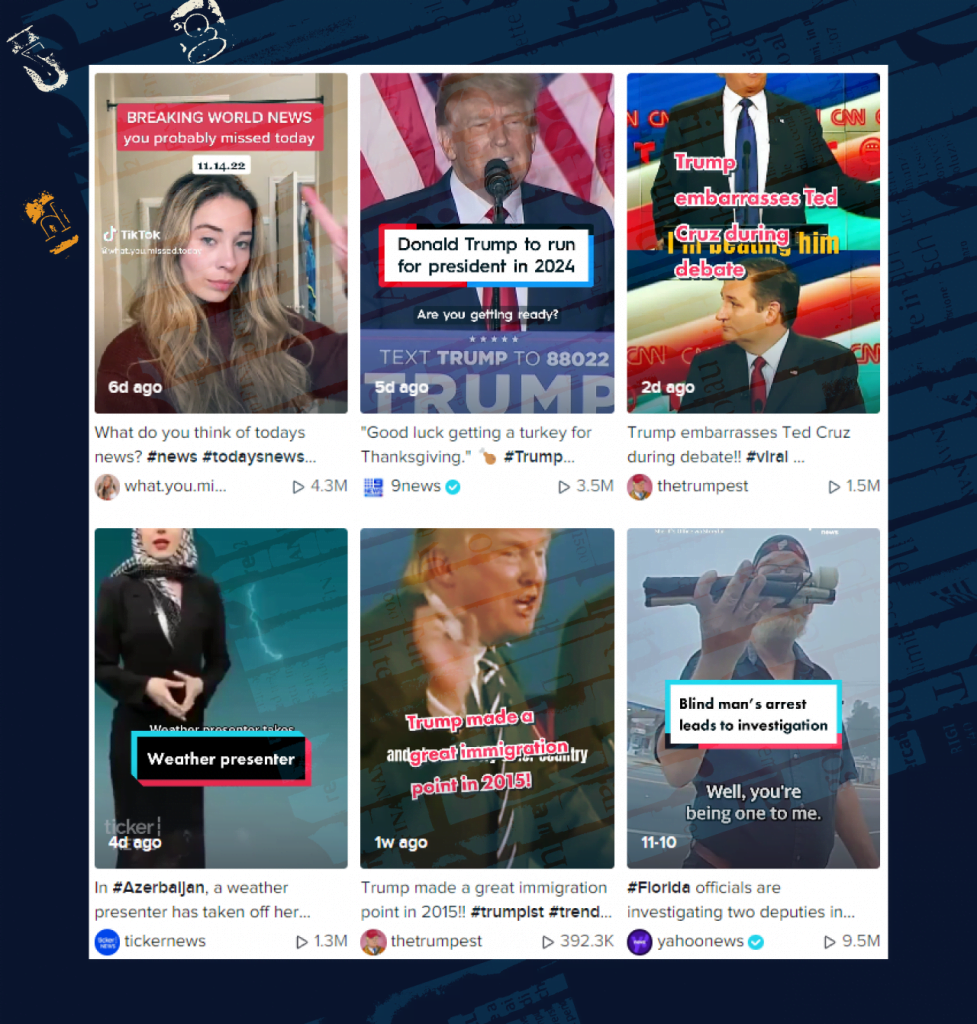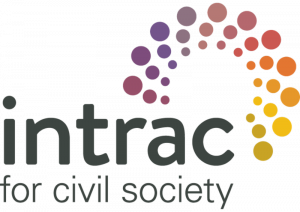Two months ago, I had the chance to participate in a conference organised by one of the biggest companies in the world. Among numerous topics covered during the three-day event, several were of particular interest to the participants – understandably, a lot of sessions revolved around discussions for the best and most sensitive ways to cover the war in Ukraine, others included the ever-so-relevant question of media sustainability and, finally, TikTok. Yes, the social media platform ruled by Gen Z and misunderstood by most people older than 35.
During the sessions and private conversations, it seemed like many news executives of large and small media businesses across Europe were struggling with the same issue – how to make their media outlets relevant to the younger generation. The dilemma itself wasn’t what surprised me – in fact, the only way media organisations can move forward is by brainstorming, acting upon and testing new ideas and trends but, what did make me stop for a second was the fact that somehow, along the way, many media organisations forgot how to do their job.
The essence of journalism is curiosity, research, asking questions and providing answers. And most of the journalists I talked to were fantastic at their jobs. But, why don’t they use this knowledge and experience when it comes to their media?
Reuters Digital News Report for 2022 shows a bleak and pessimistic picture of the media landscape, especially for traditional media and their relationship with younger audiences. It comes as no surprise that the generation who grew up on the internet accesses their news primarily through search engines and social media platforms. The report also shows that TikTok has become the fastest growing network in the survey, reaching 40% of 18–24s, with 15% using the platform for news. Still, you won’t find many media brands, especially ones in the Western Balkans, creating or adjusting their content on TikTok. Some might argue this is because young people have no interest in the world around them, and this generational gap and lack of understanding is as old as time. However, this simply isn’t true. Young people and especially Gen Z follow the news, just not the way (older) people expect them to.
What’s it all about?

Before I go any further, I feel like I should out myself and say how much I love TikTok. I think it’s educational, fun, conversational, welcoming and a lot more than trending challenges that people associate it with. Some of the best and most insightful conversations are happening here and if that’s not your experience, it might have something to do with your algorithm.
TikTok was launched in 2016 by the Chinese technology company ByteDance. It has around 750 million monthly users worldwide (for reference – active users of other social platforms: Facebook – 2.9B, YouTube – 2.2B, Instagram – 1.4B, Snapchat – 500M, Pinterest – 480M, Twitter – 397M), with users younger than 29 consisting of almost half the total number.
Aside from its obvious entertaining character, which is at the core of all social media platforms, TikTok has a very strong and dedicated community that follows educational and informative content. In fact, many Gen Zs use TikTok instead of Google search. The attraction? Its fast, up-to-10-minutes content gets straight to the point and doesn’t waste your time when you want to find out something as soon as possible, but with a little bit of context.
This being said, it is understandable why many publishers feel that TikTok is ridiculing the idea of journalism as a whole and undermines newsroom’s efforts on creating a long, detailed and well-researched topic. But there is another way to look at it. If we know for a fact that people’s attention span is lower than ever (although not as low as we think) and that journalists constantly feel the pressure to immediately grab your attention, then this seems like a perfect opportunity. Your stories can be divided into several parts, almost like a web series, or they can serve as a hook for a longer article on your website, or a longer video on YouTube or even Twitch, an increasingly popular platform. Think of it as a trailer for a movie – if the trailer is engaging enough, it will motivate you to watch the whole thing.
On the other hand, every social media platform comes with its set of flaws and this one is no exception. If you decide to start your TikTok news account from the Western Balkans region, you won’t be able to make any profit from it since their creator fund is for now focused solely on the big global markets. Secondly, TikTok has had a bad reputation from the beginning when it comes to privacy, safety and censorship (the fact that it was made in China didn’t help in building trust). Moreover, no matter what their official copyrights policy states, many regulations in practice are still in the grey zone. For some, it’s a dealbreaker - for many others, a polygon for endless play.

Where to start?
Not every media outlet should be on every social media channel.
However, to understand whether it makes sense to spend your time and make an effort on creating another communication channel, you need to know the answers to very basic questions: who is your audience, what are their habits, how and where they like to spend free time etc.
Check out our community building and engagement course where we guide you through these steps.
If you’re just starting out in the business or you’re a journalist thinking about changing the course of your career, TikTok can be a good starting point. One of the most popular media start-ups that was originally created for TikTok was a Spanish account Ac2ality, which soon became one of Europe’s biggest news producers on the platform.
For its founder, Daniela McArena, it all started when she was working for the Spanish Embassy at the United Nations in New York, in charge of compiling news and reports for her colleagues. She soon realised that the sources she had access to “wouldn’t provide enough context and explanation”. Moreover, the content was ill-adjusted for the digital world and younger generations lacked clearness and context in order to understand international news. This is when she decided to launch Ac2ality, a media for Gen Z on TikTok that would cover news in a “quick, concise and comprehensive manner”. TikTok is still their primary publishing platform, although they have since launched a website and also use other social media channels like Instagram and YouTube - for further engagement but also for safety reasons.
@ac2ality Palestine refers journalist’s death to the International Criminal Court (ICC) 🇵🇸 Source: BBC #learnontiktok #oneminutenews #tiktoknews #palestine #aljazeera
♬ Paris - Else
The ethical question: Journalists vs. Journo-influencers
The Reuters Digital News Report also mentions one piece of very interesting information that will be valuable for going forward. The research has shown that young people growingly refuse to be associated with brands and tend not to trust them as much as individuals with credibility (or, at least, who they believe is a credible content creator), even if they’re affiliated with a bigger brand - this worked brilliantly for the Washingon Post’s Dave Jorgenson. Others recognised this on time and used their already existing and loyal community to start their own media channels like Cleo Abram, a former recognisable face of Vox.
@cleoabram getting ready for new images from the JWST! 🛰 #learnontiktok #spacetok #jameswebb #askcleo
♬ Blue Blood - Heinz Kiessling & Various Artists
This rejection of brands, nonetheless, brings us to a much wider and more serious topic and that is the ethics in today’s journalism and, actually, the definition of journalism today. With the unimaginably large number of content creators that are starting their channels on a daily level, there’s the inevitable question of integrity, accountability and the knowledge behind it. How can we make sure that the content we receive is validated, fact-checked and well-researched? Is there a way to create a distinction online between actual journalists and what Salla-Rosa Leinonen calls journo-influencers?
On the other hand, aren’t we all victims of bad journalism and propaganda media every day? Haven’t we all experienced being fooled and misguided by notable media outlets? If that’s the case, where do this cynicism and even disgust toward content creators come from? The world has changed - let’s accept that journalism has also changed forever.
It’s not actually about TikTok

Yes, this article mostly focuses on TikTok since it seems to have become the main topic of conversation among media professionals, the same way podcasts dominated conversations just a few years ago. Many journalists and media editors reject it due to its almost non-existent monetisation potential. I see it as a wonderful audience building and engagement tool, as well as an important exercise for media organisations in general. Here’s what I mean by that.
Use TikTok as an example for a much broader conversation that is listening and following your audience.
TikTok(s) will come and go, but media organisations need to be agile enough to recognise and (in some cases) follow trends, adjust to them and keep the interest. This is, obviously, too big of a pressure and job, especially when there is so much to do on a daily basis and the media industry is in a very unfair game where it constantly competes against the racing clock that is technology and people’s attention. This being said, the only way for the media to “win” this game is to accept they need to play it.






























